On the borders of Pakistan and China, north of India, this region of Tibetan Buddhism is sandwiched between the Himalayas and the Kunlun. At an average altitude of 12 000 feet, it enjoys a fascinating and unscathed beauty and is peopled by friendly folks, full of warmth and wisdom. Every summer, the « roof of the world » is invaded by "yellow hairs », hordes of hikers and bikers eager to experience the rhythm of the Ladhaki.
It is a simple and sacred existence, unchanged for millennia until its fateful opening to the outside world in 1974. For the nine following months, the roof of the world recovers its status as one the most remote place on earth, untouched by the hustle and bustle of people. Khardung-La is the highest vehicle accessible pass in the world, towering at 18 379 feet above sea level. For thirty kilometres one’s life is threatened by over-aged Indian trucks blasting down the mountains at breakneck speed, gigantic snowdrifts and dizzying abysses.
But exploring Ladakh is also coming across colourful and fascinating festivals complete with oracles in a state of trance after a month of meditation. Gochak, at the very last moon of winter, is a unique ceremony. Thousands of pilgrims, two days in a row, prostrate themselves, face down on the laterite, hands wide opened in a fiery and deep prayer to Buddha. A traditional society, resisting western way of life. In most villages, locals continue to consult the hamchi, the traditional doctor who heals villagers with his concoctions of Himalayan seeds, crushed rocks, musk of deer or newborn excrement. Improbable encounters with, at the border of Pakistan, the Aryans, the last descendants of Alexander the Great. Last but not least, in Stakna, on a tiger nose shaped hill, a seven years old chubby and hieratic Little Buddha who has just become the Rinpoche, Supreme Buddhist authority, of seven monasteries, ruling over hundred monks.
Leh, capital of Ladakh, 30 000 inhabitants, perched between 3 500 and 7 000 m above sea level in the Indus Valley, is the largest city in the country. From the old royal palace, one dominates the heart of the city, more and more affected by tourism, at least during the summer season.
Come February in Leh the faithful walk 18 km and every two or three steps kneel and touch the ground with the forehead in worship. This lasts over two days during the procession of gochak. Spread out on the ground, they protect their knees with a thick apron. At the end of the ritual which lasts about twenty hours, comes the promise to reach ataraxie.
On the new Tibetan year an annual Buddhist procession blesses every form of life on the planet. The Buddhists devote themselves to prayers, strictly avoiding the consumption of flesh and alcohol.
The low-pitched sound of songs mingle with the limpid voices of the women who close the march. The mantras are repeated indefinitely in a serene and gentle trance.
Along the way, huge steaming pots of rice and buttertea stand ready to satisfy the pilgrims. The whole city and its people feel united with those who pray.
In this inhospitable and arid land of the State of Jammu and Cashmere, people do not have much but give a lot. At the end of winter, after eight months of bitter cold and heavy snow, water and food are scarce. But in every single house, people are welcoming the visitor with "chai", streaming milk tea and "balep korkhun", a crispy bread cooked on a skillet.
At an altitude of 3,600 meters, these schoolgirls play at the foot of the Thiksey Monastery, one on the high places of Ladakh’s spirituality. Founded in the 15th century on a rocky hill just east of Leh, it could be a replica of the Potala, a symbol of Tibetan Buddhism in Lhasa.
In the morning, the monks meet for a puja, a Buddhist ritual of offering in which they sing, recite sacred texts ... like here at the monastery of Phyang, one of the oldest Tibetan monasteries in Ladakh, not far from the capital Leh .
Monk or shaman? The monk tosses the buttercake into the fire to ward off evil spirits. Here, Buddhism mingles with ancient shamanic practices.
In Yangthang, this man enjoys a panoramic view of the Himalayan peaks, an ideal spot for reading sacred texts.
Return from the feast in the village of Gya. These two women in festive clothes return home after the oracle ceremony. Animist practices are still very present in Buddhist Ladakh.
All day long, during the sacred month of March, these women walk around a stupa (a Buddhist monument) on the heights of the village of Gya, with their rosary and prayer wheel, reciting incantations.
It is rare to be able to photograph oracles, as here in Gya. During this ritual marked by animism, the monks, in a trance, deliver their predictions.
A bride in turquoise. This couple poses in their kitchen, in Hemis Shukpachan village, dressed in their wedding outfit worn on the day of their marriage. On ceremonial occasions Ladakhi women wear on their heads this rather large size adornment, set with turquoise stones (in the foreground). The girls receive it from their mother on their wedding.
Refinement extends to the smallest detail of this traditional « goncha » outfit, worn by a Hemis Shukpachan merchant: a silver ornament adorned with turquoises and a purple wool dress lined with silk.
Dha Village, 20 kilometers from the Pakistan border. Country of the Dardes-Aryans of Dah (Brogpa) who define themselves as Aryans, direct descendants of Alexander the Great and first inhabitants of Ladakh twenty centuries ago. The poverty of the houses contrasts with the pomp of traditional dress.
"We marry only amongst members of our ethnic group. Our customs, like the refusal to consume any product deriving from cows, does not encourage crossbreeding. Our breed remains 99.5% pure. "
Part of their community lives around Gilgit, Pakistan, while about 3,000 reside in Ladakh, spread into eight villages.
Each year, on the 14th and 15th days of the Tibetan calendar (beginning of March), the spectators flock from all Ladakh to attend the Tibetan dances and sacred songs of the lamas of the Matho monastery, and admire their astonishing costumes.
The monks wear masks usually exhibited at the Matho Museum, which also houses precious religious paintings on silk known as thangkas.
A traditional physician or hamchi, prescribes a powder of molluscs, caterpillars and silver dust to a nun. "We can heal 90% of diseases, concludes the hamchi. But we don’t use surgery and we need to adjust to some illnesses which were barely known in Ladakh twenty years ago such as stress, cancer, diabetes. These diseases have been imported by westerners and Indians down below."
The ladakhi doctor's kit. In the upper right, the leather bags, where he keeps the various natural powders (made from plants, crushed precious stones…), which he uses to concoct medicines. Below, a measuring spoon.
All medicines are made from natural products: Himalayan plants, crushed rocks, powder from precious metals ... sometimes up to 25 ingredients are mixed together by the hamchi.
The tall Buddha Maitreya at Likir monastery, next to Saspol city, is 20 meters high and filled with scrolls of Buddhist prayers and religious texts.
Monastery of Stakna. The youngest Rinpotche (literally the precious) was identified in Himacha by the monks at the age of three. Now seven, he is a spiritual leader and a person acknowledged as the reincarnation of a former Rinpotche, a master deceased nine years ago at the age of 75.
The young ones dream of being a guide or a civil servant, rather than a shepherd... here after a sledge ride.
This shepherd encountered on the shores of a frozen lake near Gya, carries dried yak dung, very useful as fuel or to reinforce the insulation of the houses.
For several weeks, these yak keepers live in isolation in the mountains of Kyam. Next to the butter tea pot, a barley pancake, the basis of the diet in Ladakh.
Kyam region. Nomadic yak herdsmen have long supported the daily life of families, providing them with milk, meat, wool and hides.
Village of Phyang. An ice stupa of 16 million m3. These pyramids of ice can reach heights of more than 30 m and store rain and river water to combat desertification, without the need for a reservoir or a tank.
A region under surveillance. Bordering China and Pakistan, the Ladakh region is highly strategic for India. The army is everywhere, and the military bases mark the landscape.


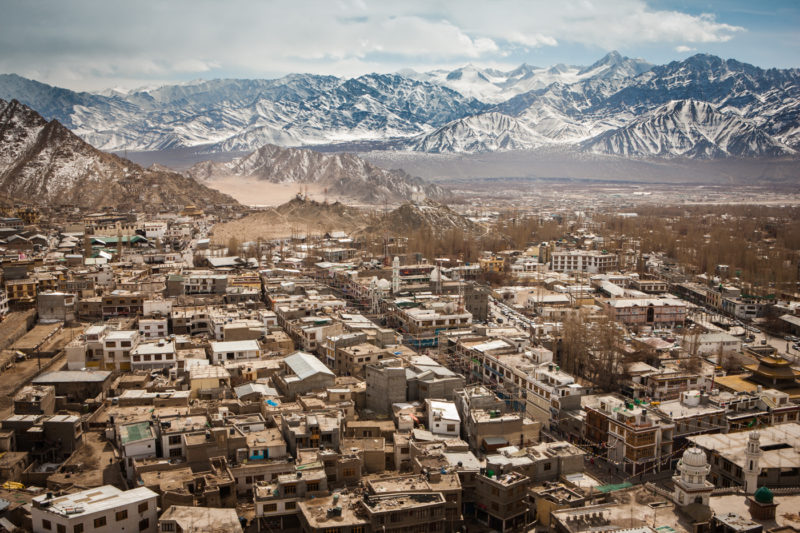
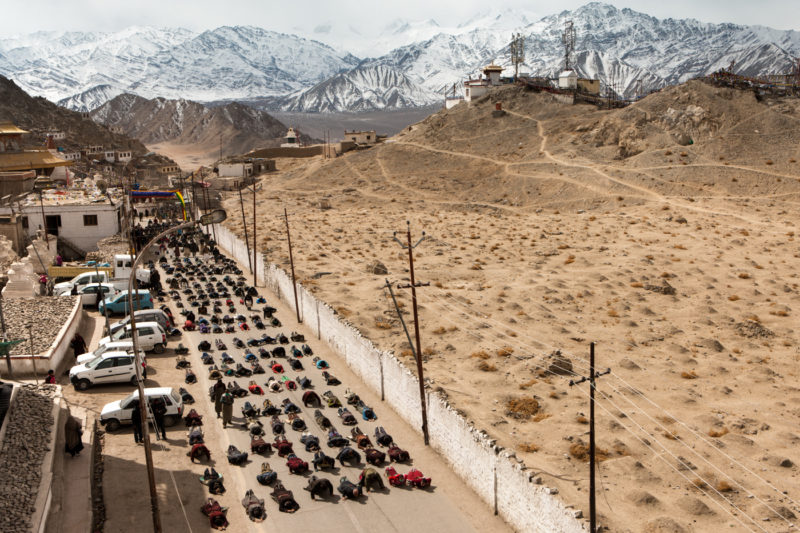


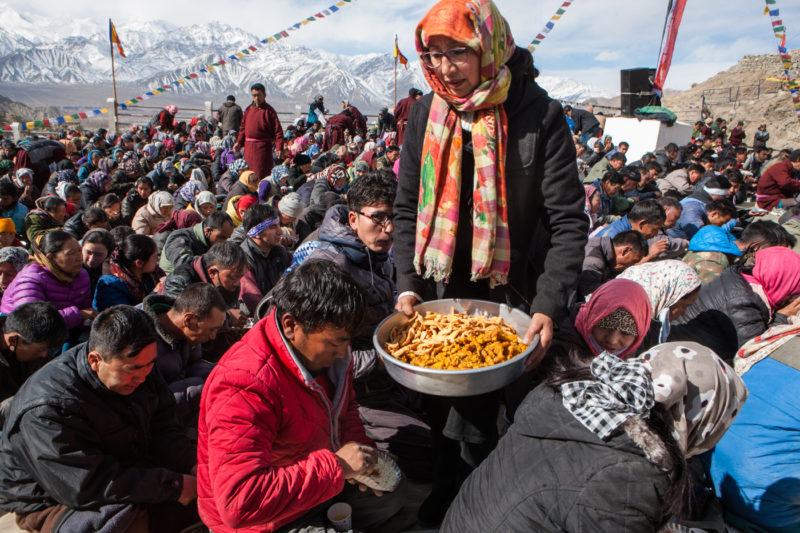
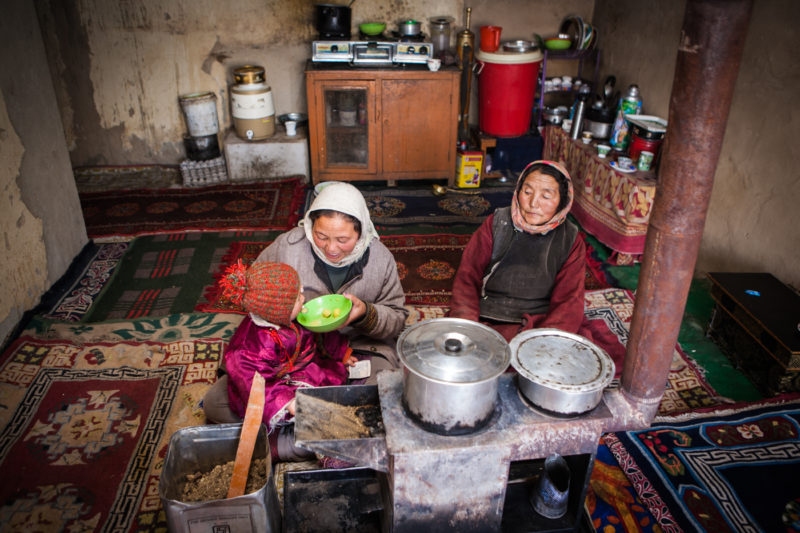
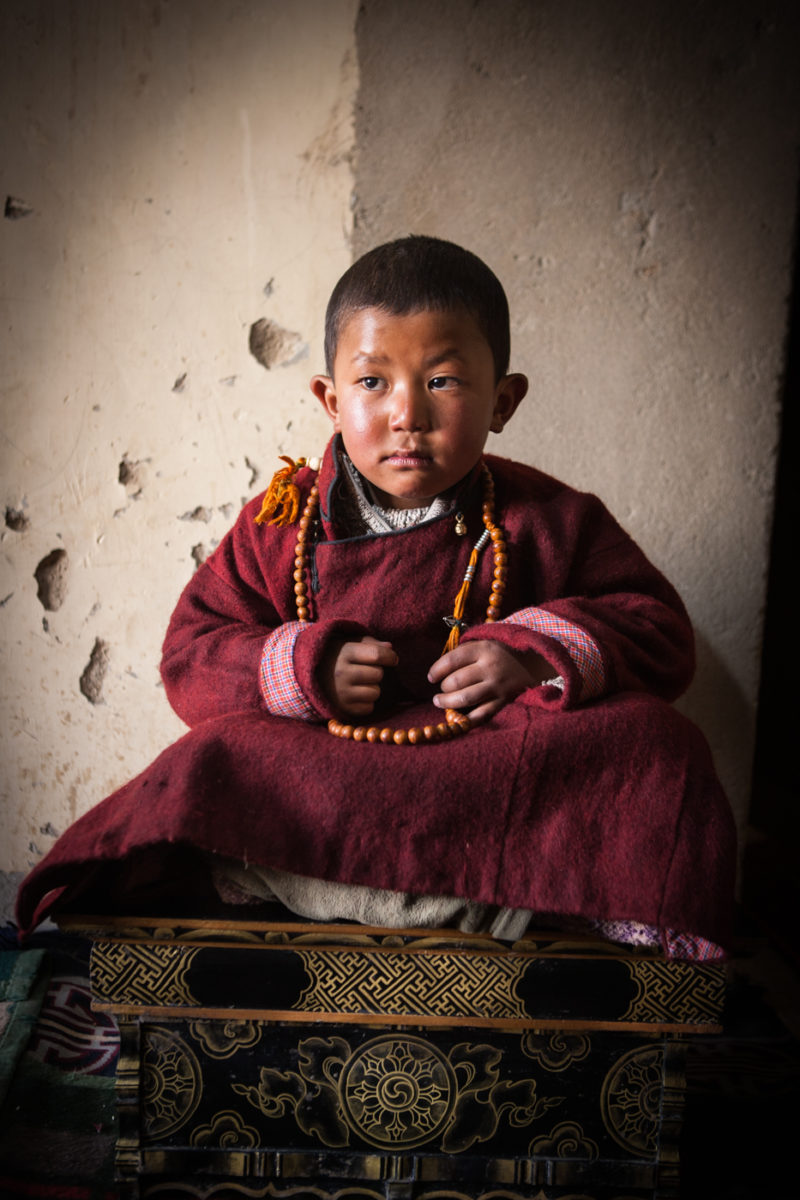
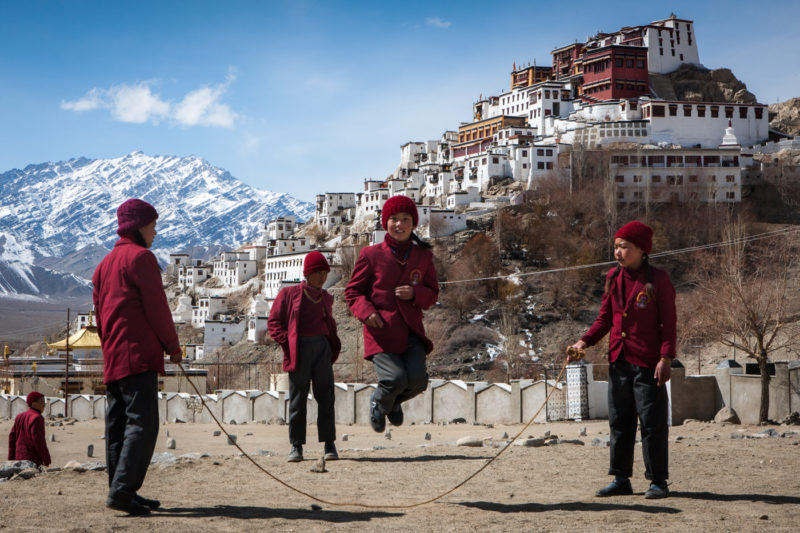
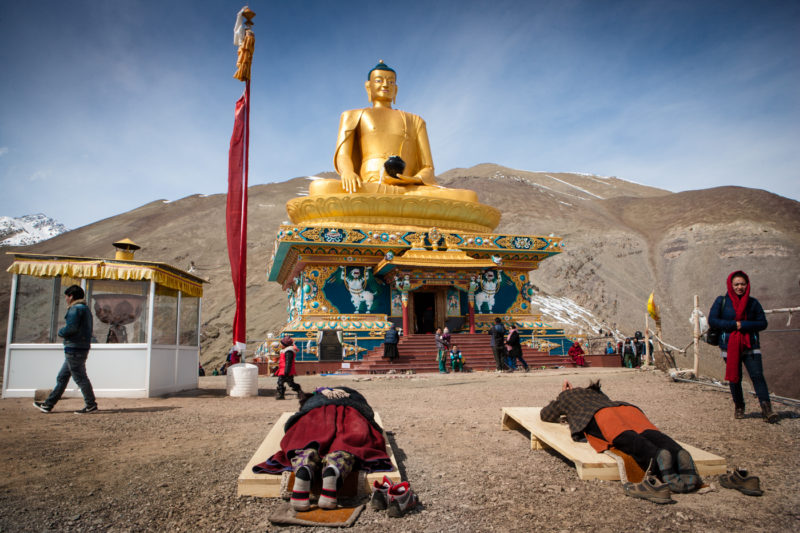

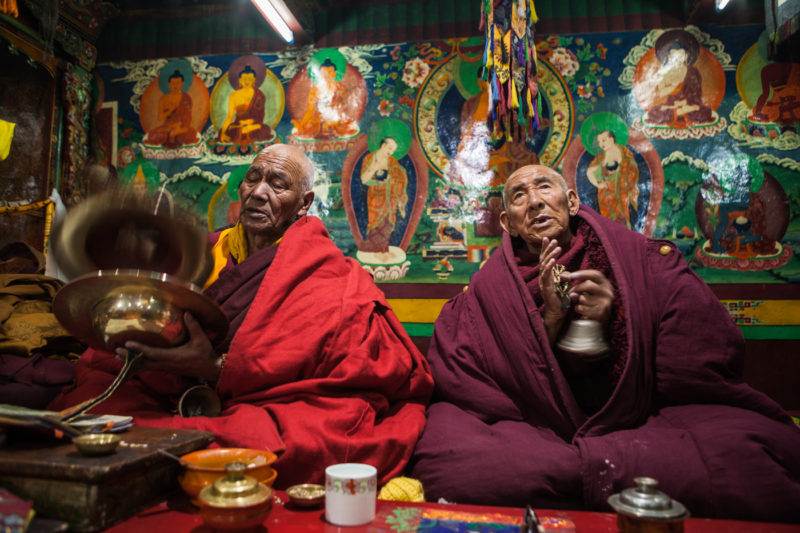
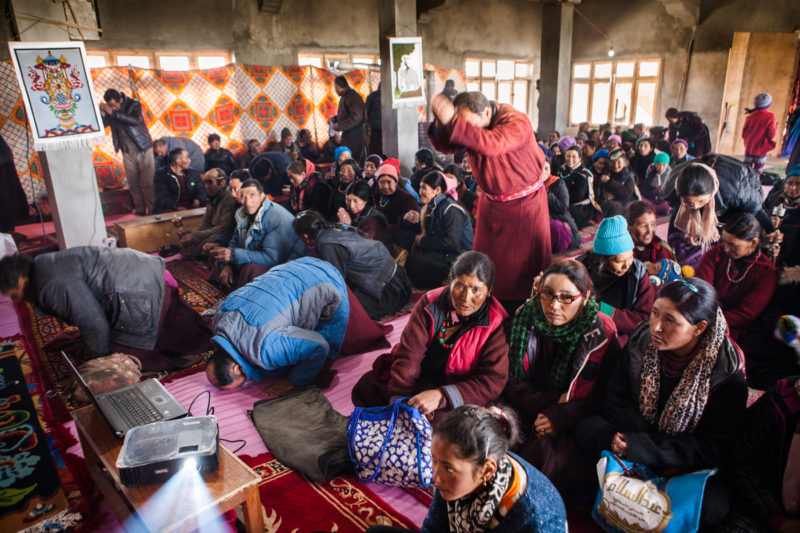
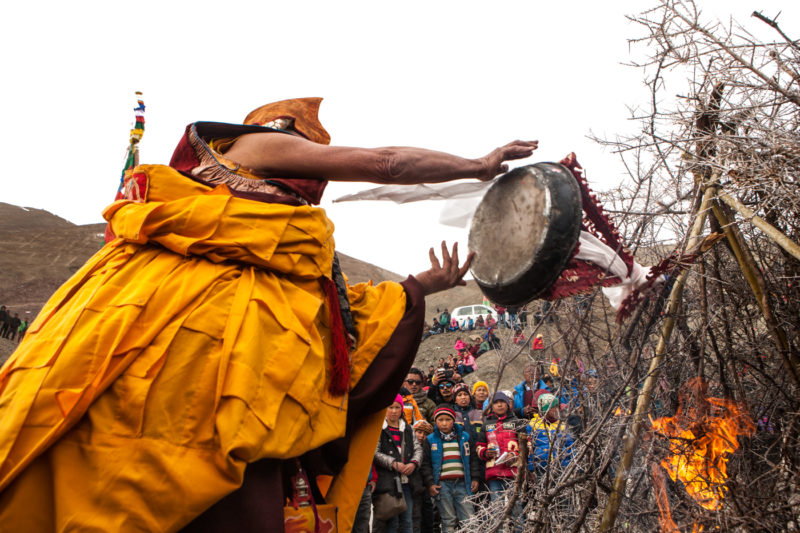
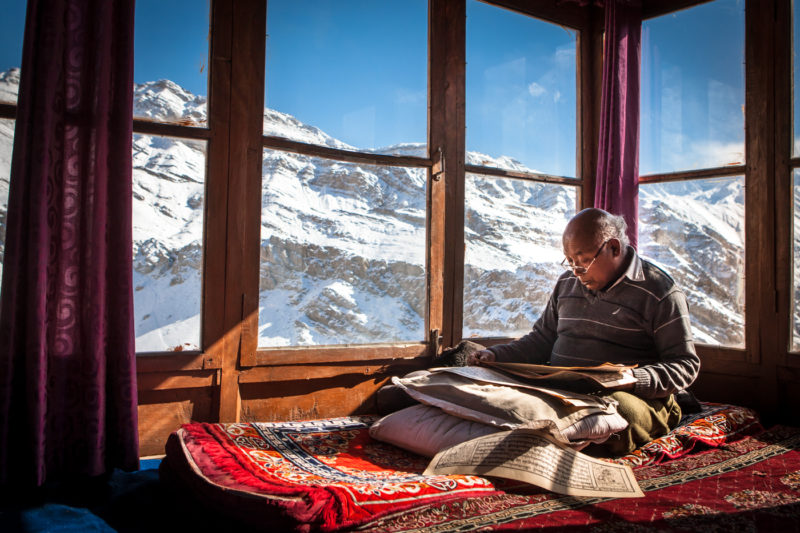
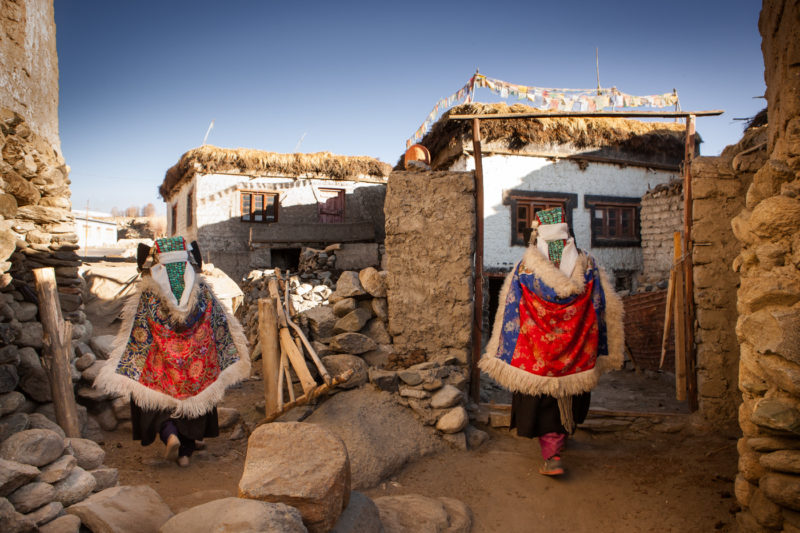

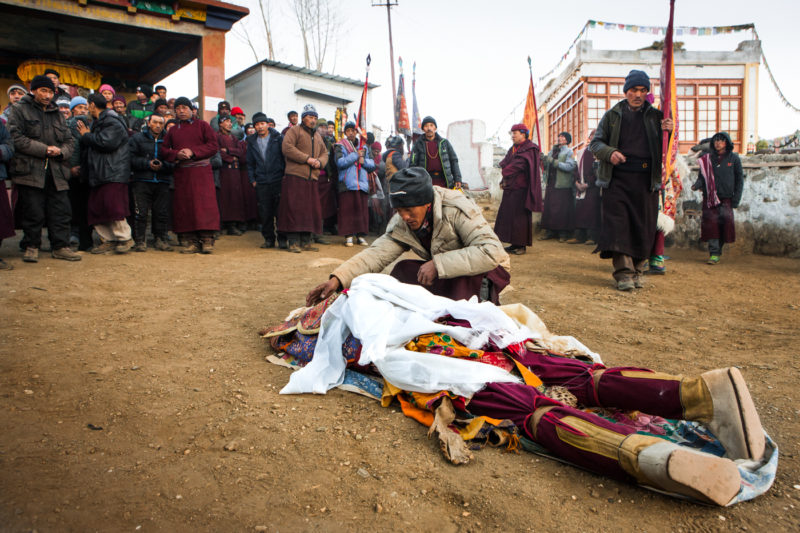
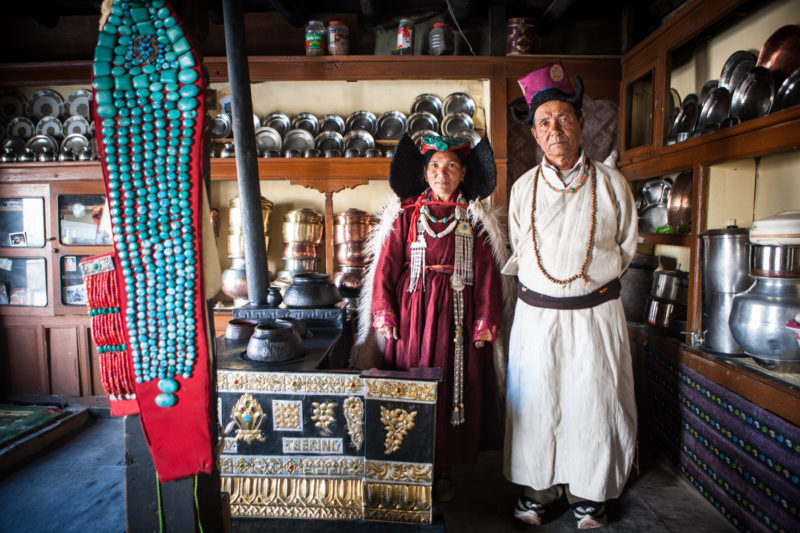
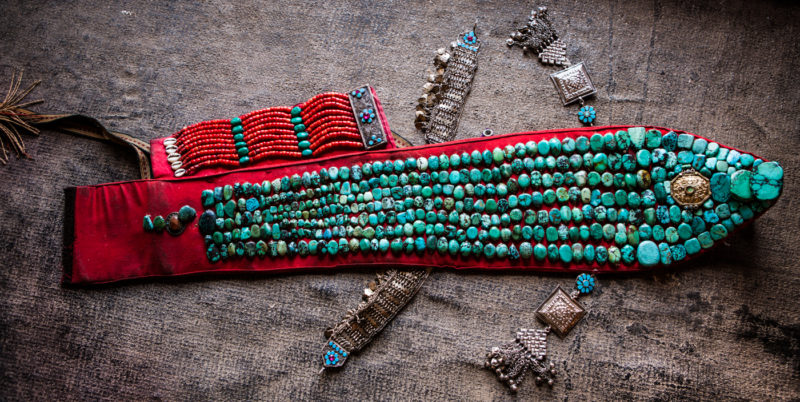
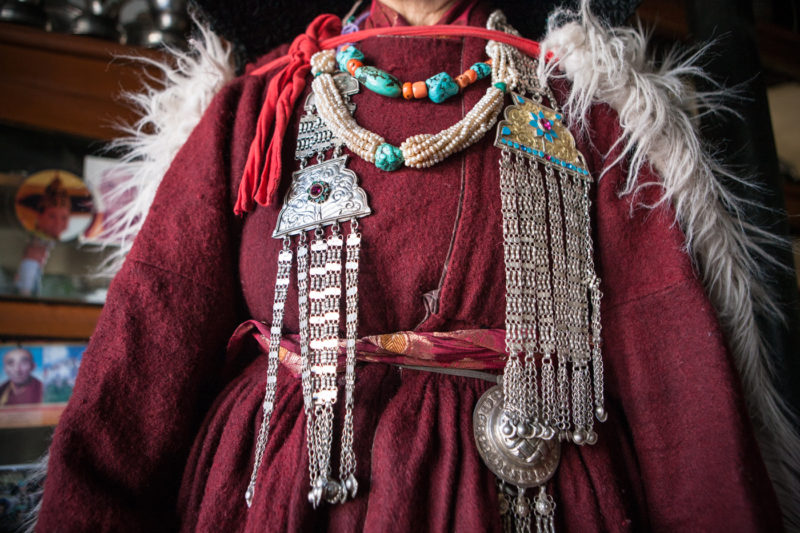

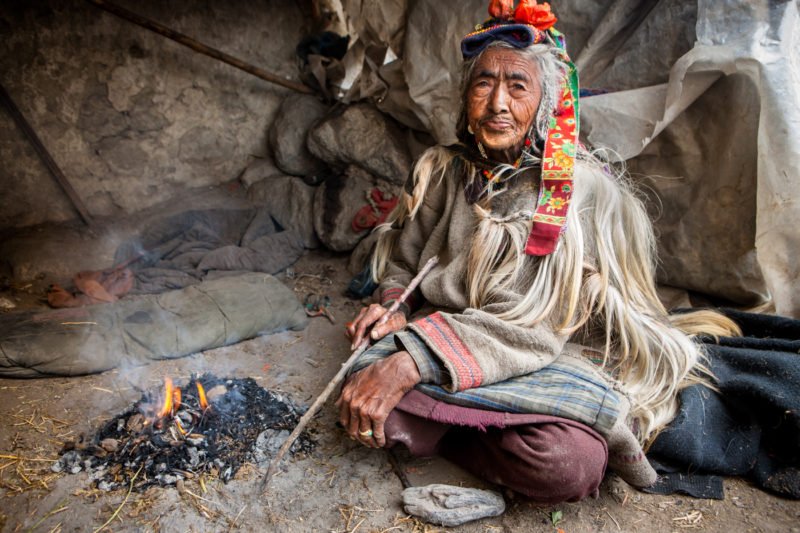
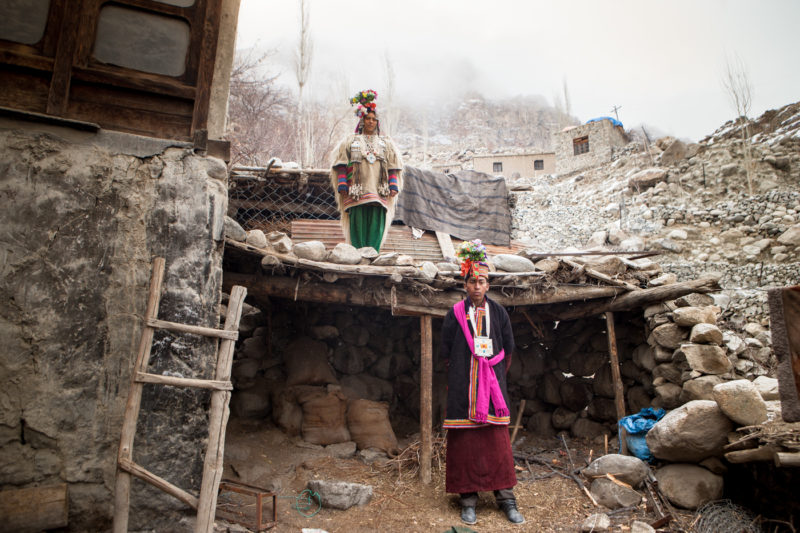
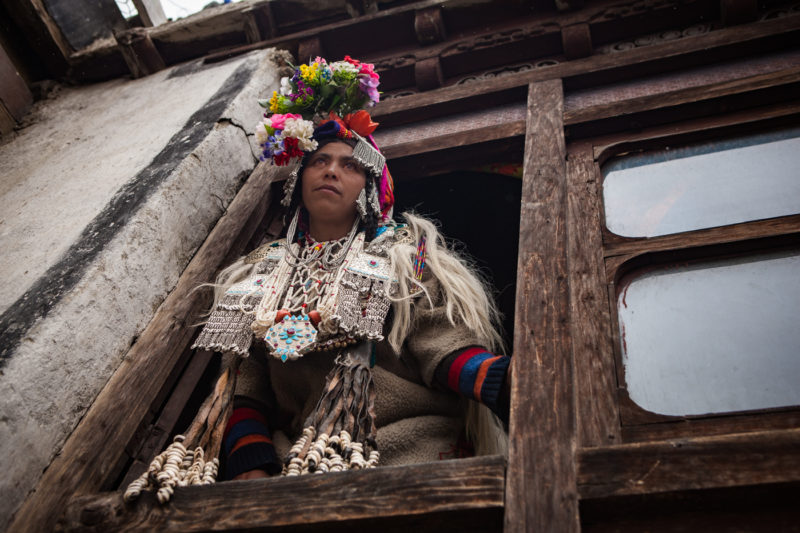

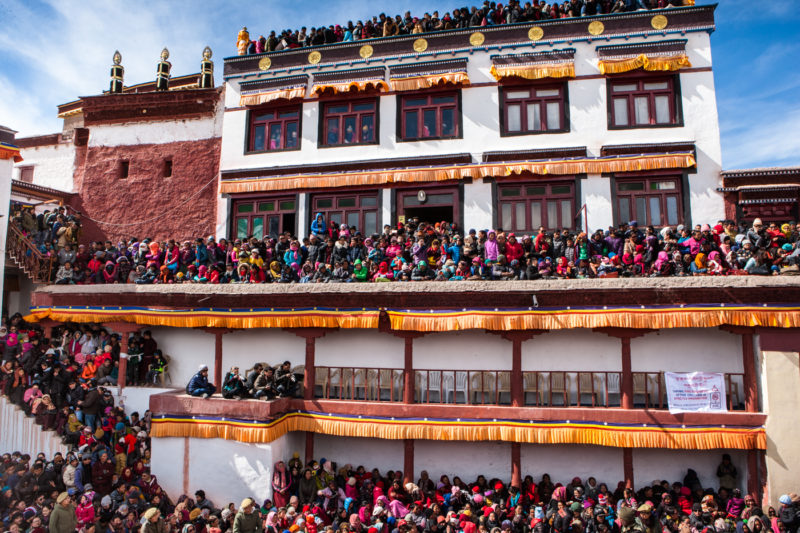
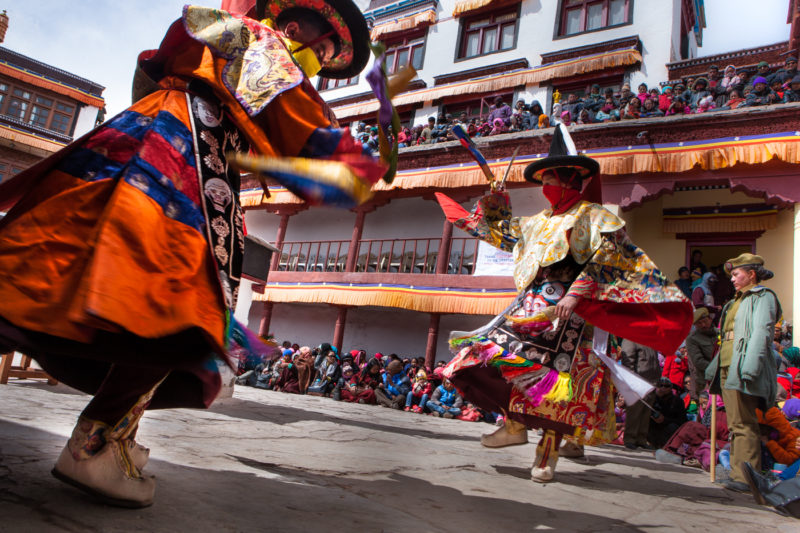
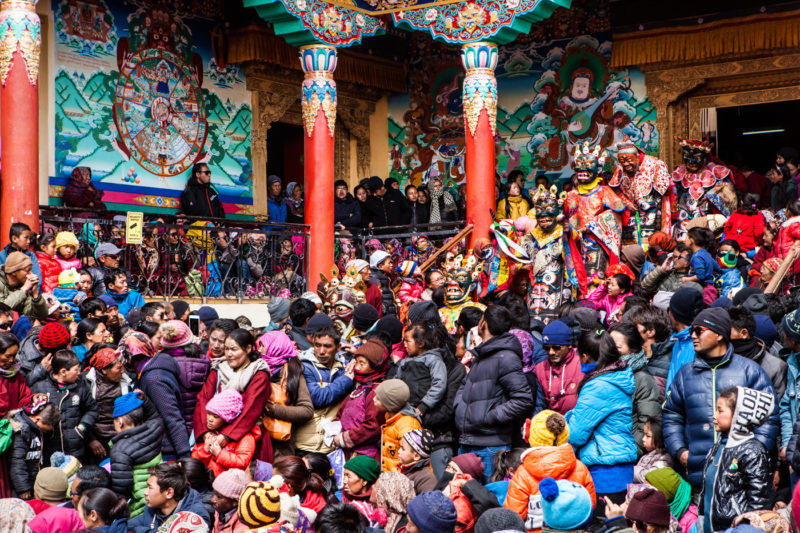
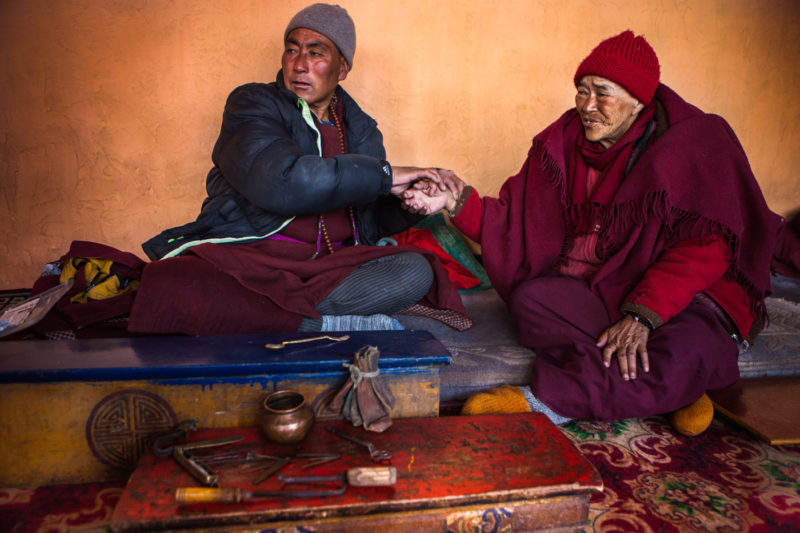
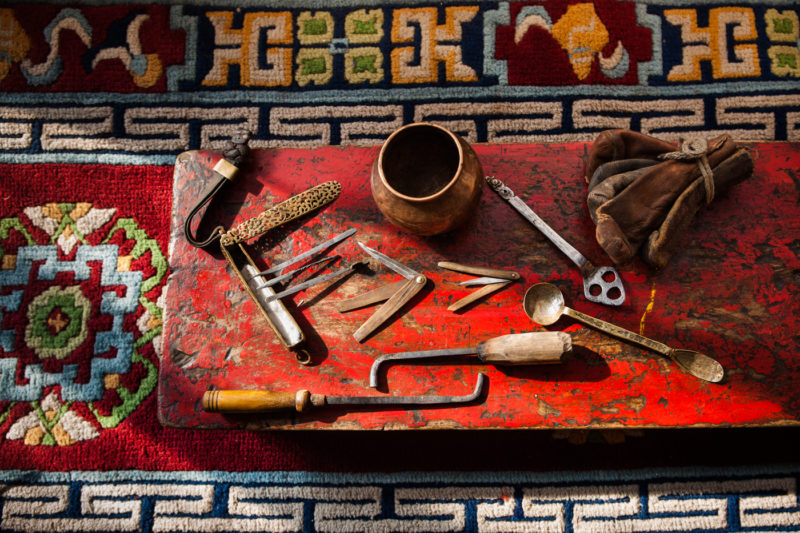
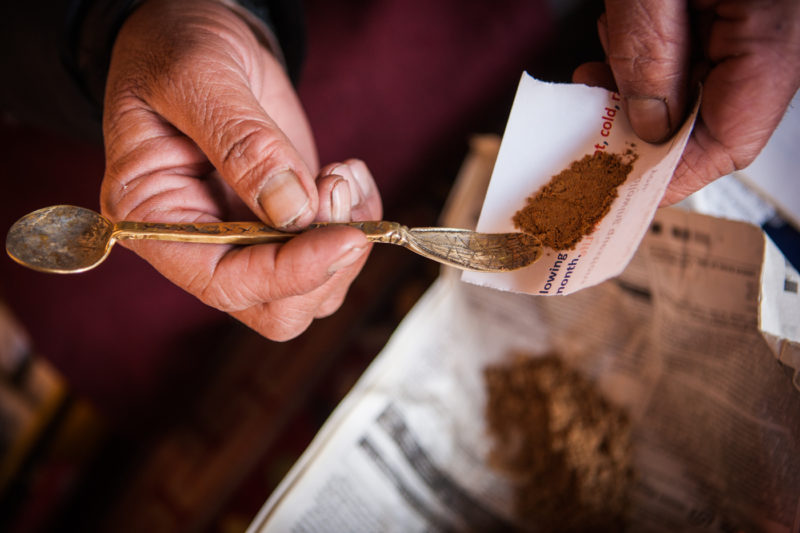
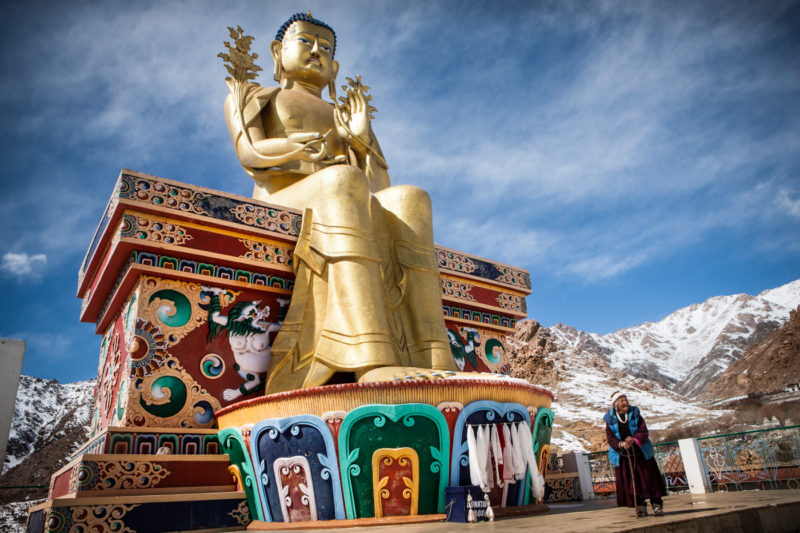
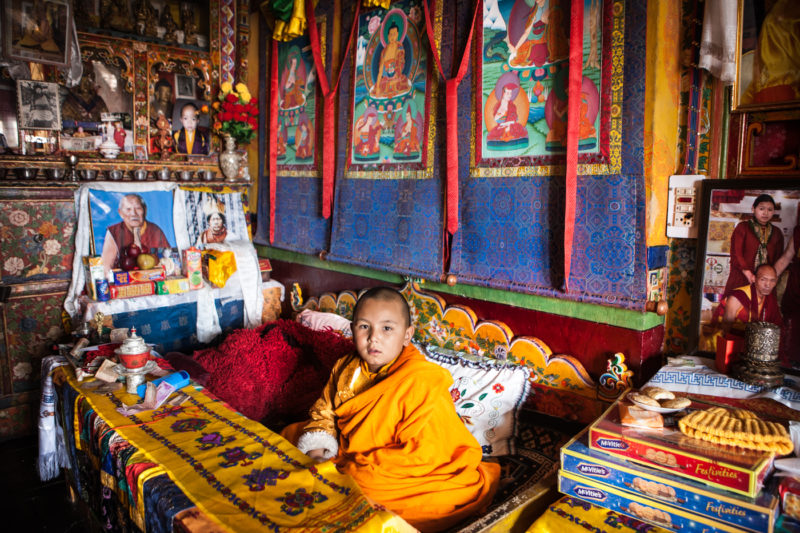

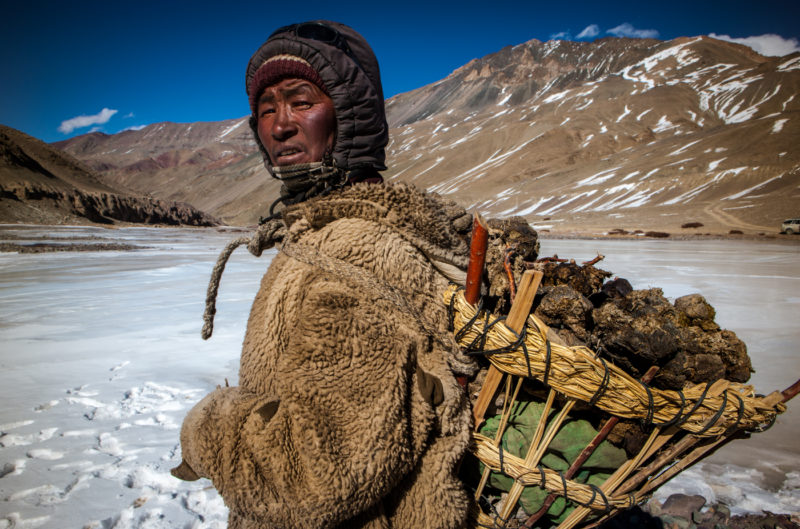



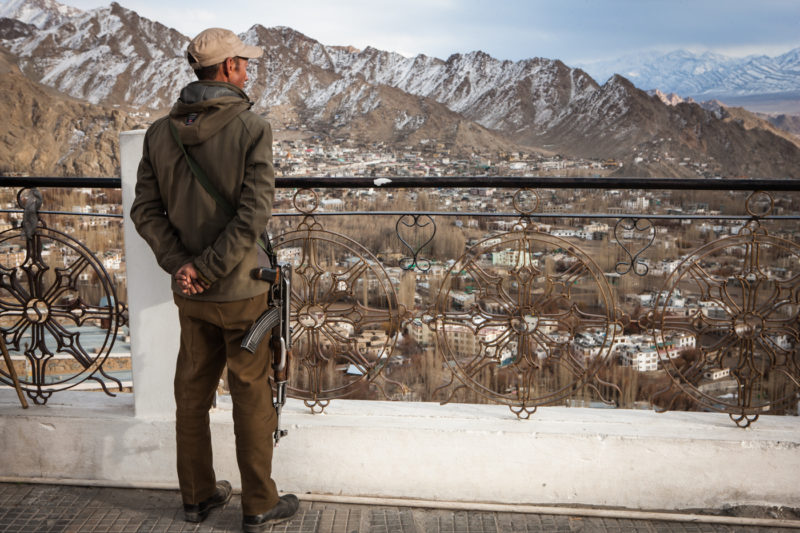
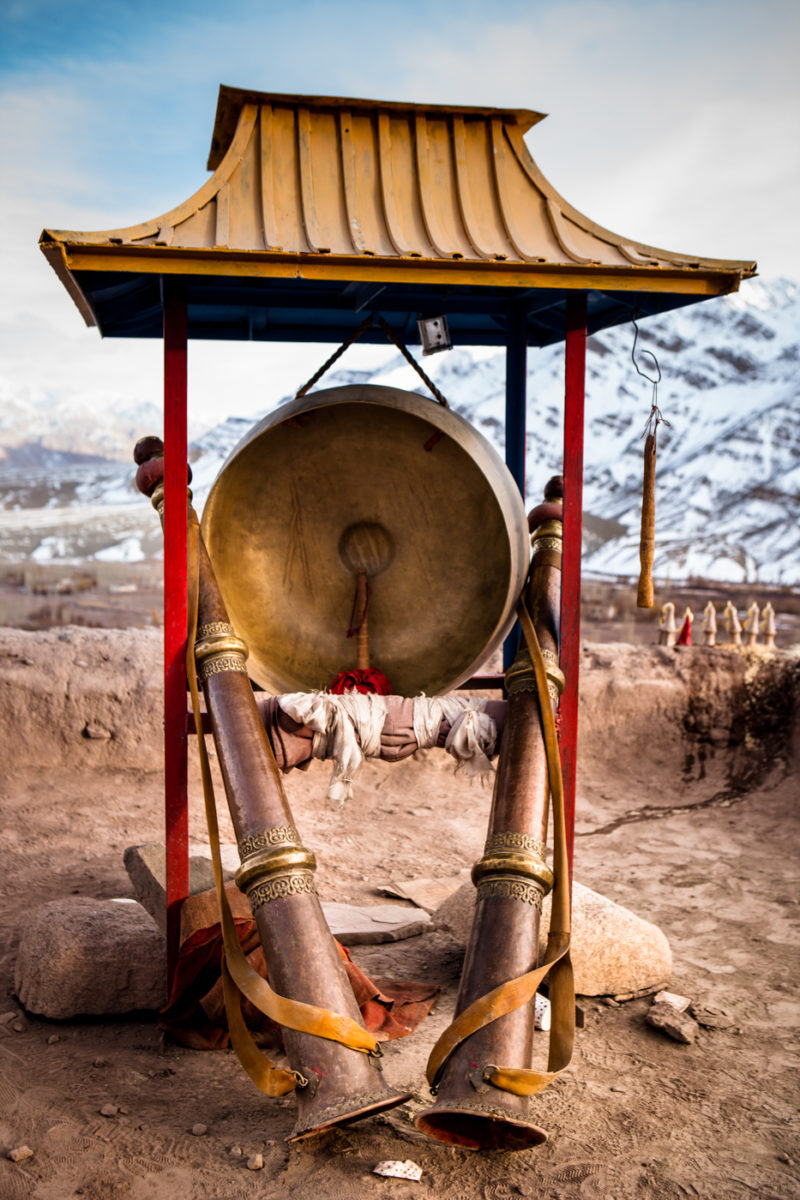
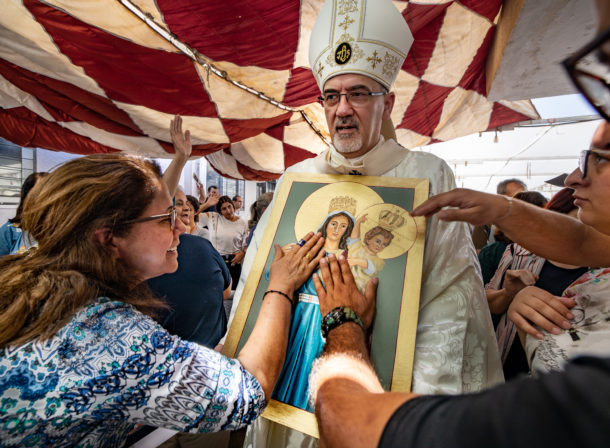


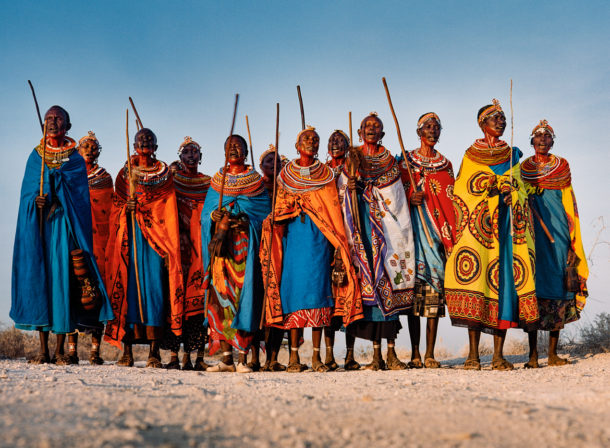

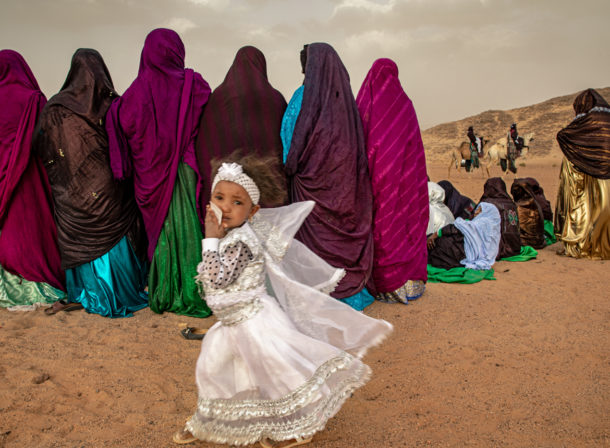
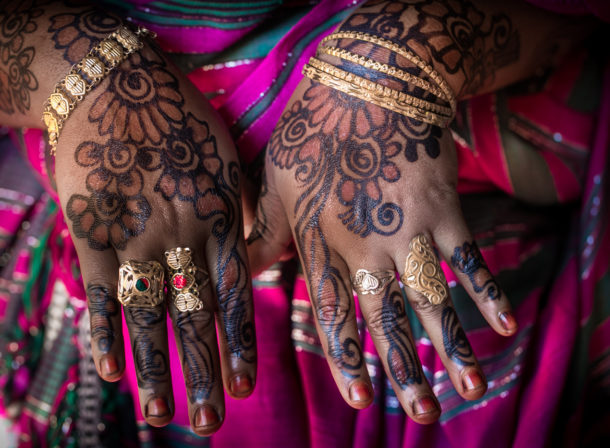
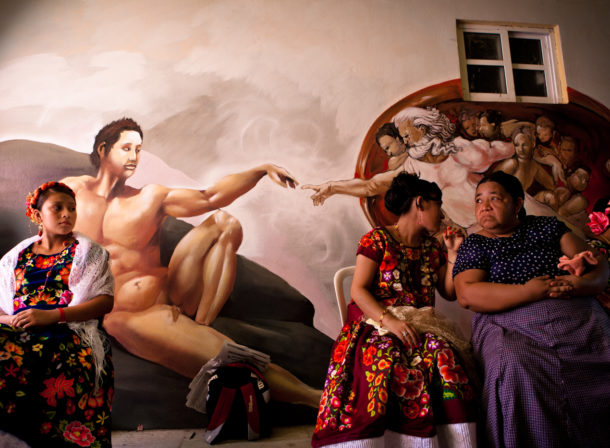

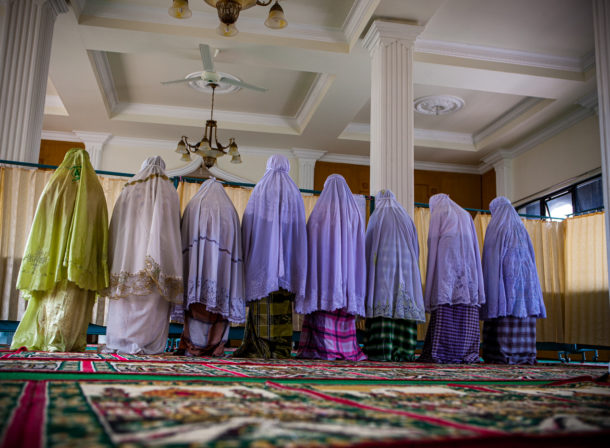
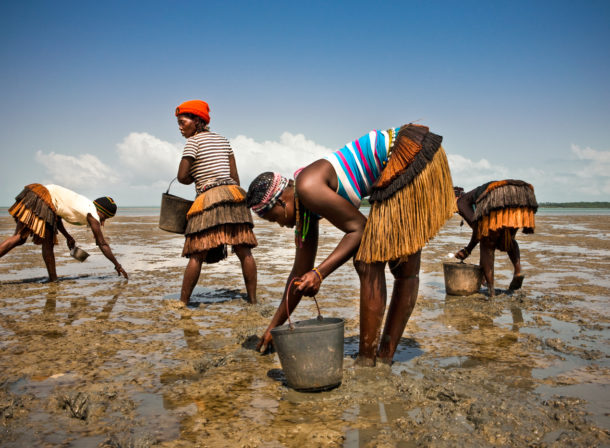
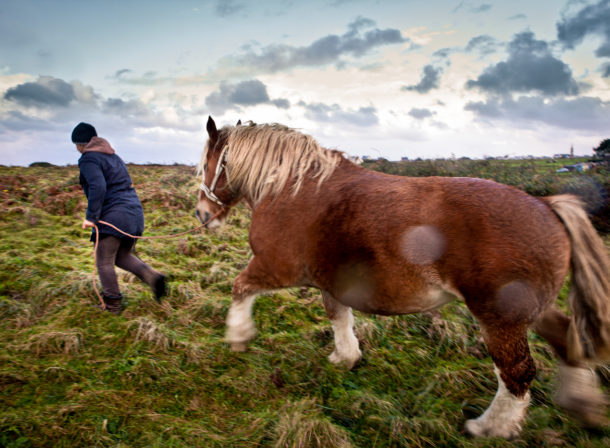
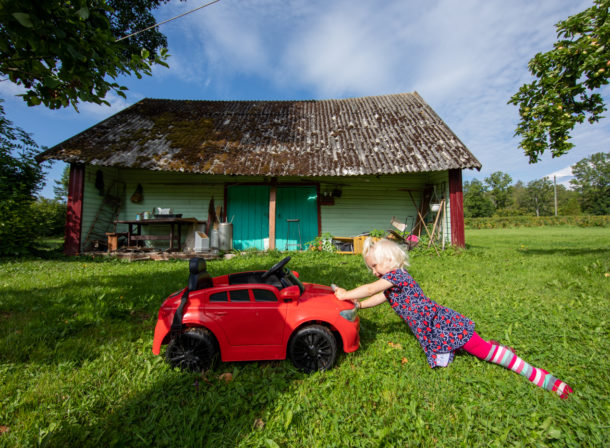

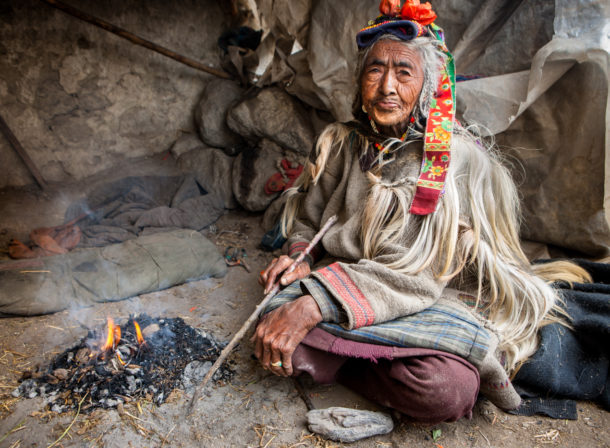

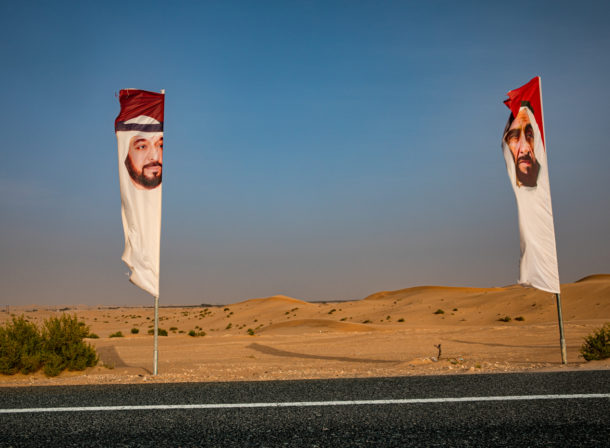
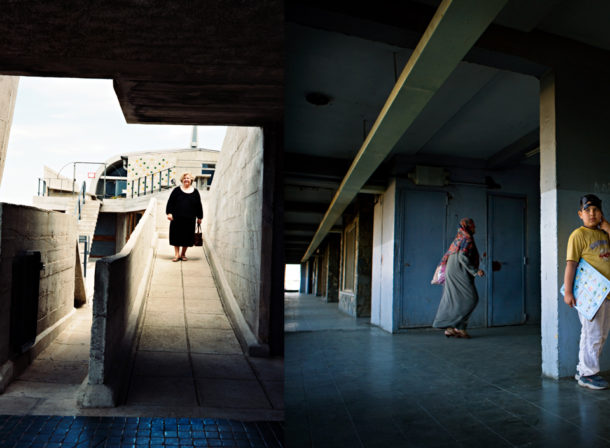

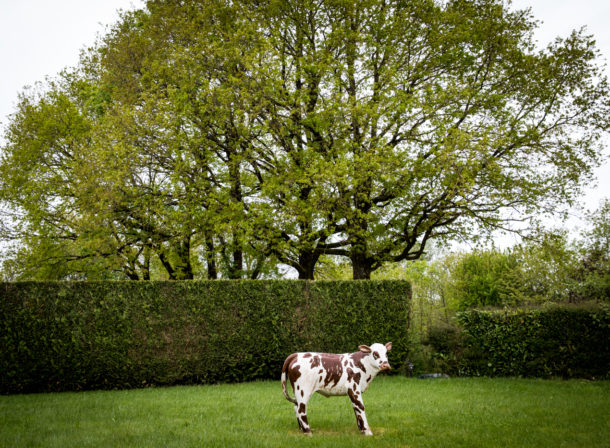








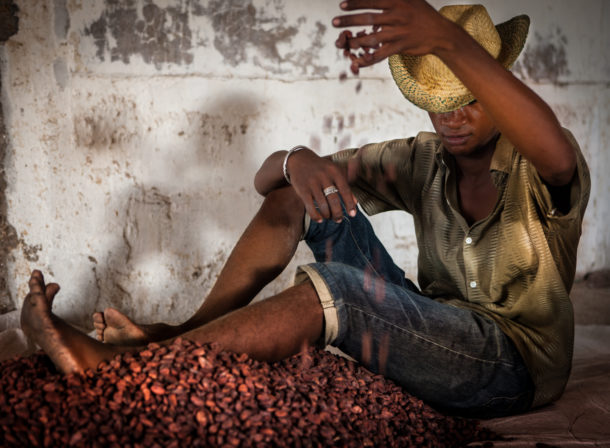

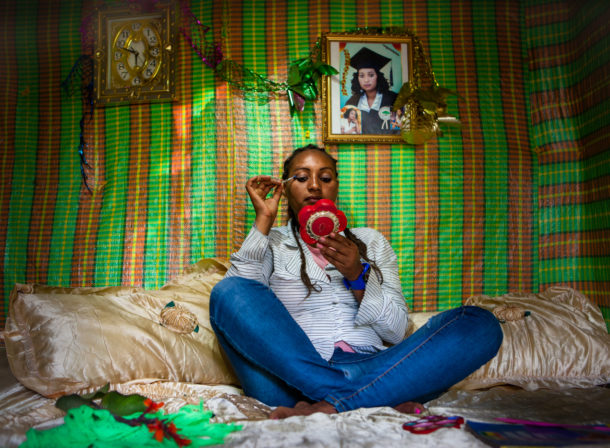

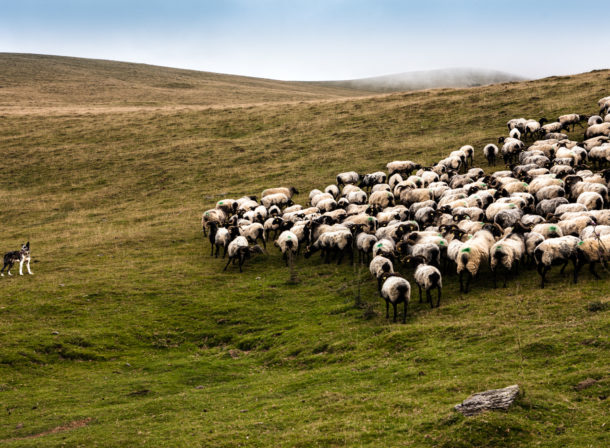
Maginifique, felicitation!
Stunning Work!
Very Nice